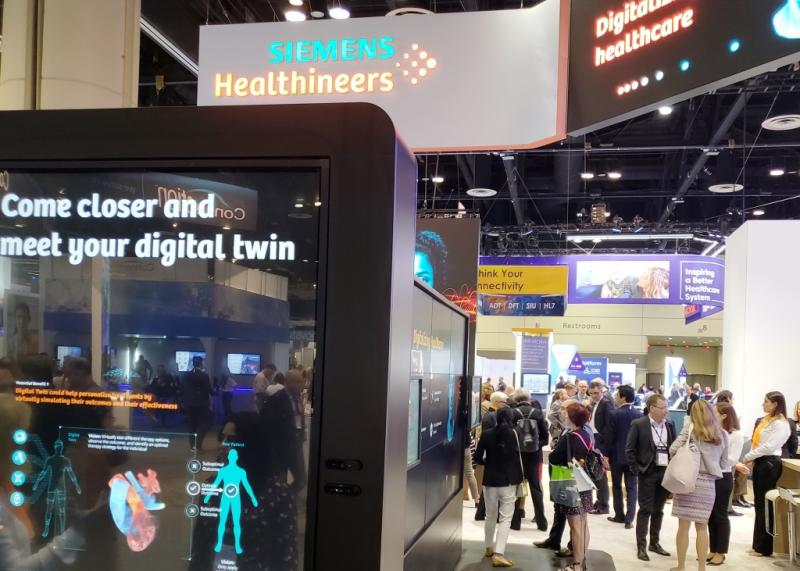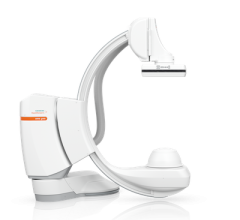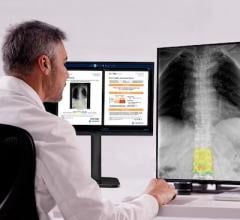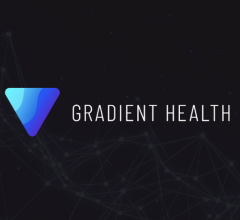
Greg Freiherr has reported on developments in radiology since 1983. He runs the consulting service, The Freiherr Group.
HIMSS 2019 Thursday - Siemens Showcases Development of Virtual Organs

Siemens featured digitalization and the prospect of a “digital twin” in its HIMSS19 booth. Photo by Greg Freiherr
At its booth on the exhibit floor of the annual Healthcare Information and Management Systems Society (HIMSS19) meeting, Siemens Healthineers called on visitors to meet their “digital twin.”
This twin, illustrated by virtual organs, was part of the company’s theme at the HIMSS meeting of “Digitalizing Healthcare,” one made possible by the venue, which emphasizes “IT and data understanding,” said Joerg Aumueller, Siemens head of Digitalizing Healthcare and a marketing vice president. The annual HIMSS meeting is “about the target groups, like the chief information officers, that are interested in how can we use (patient data) and derive values to be more precise or transform care.”
According to Aumueller, the digitalization effort shown at HIMSS addresses “how you opertionalize the value of data and also how we connect the care teams and patients better.”
A digital twin of the kind envisioned by Siemens would allow caregivers to digitally “try out” treatments, then — theoretically — choose the treatment likely to achieve the best outcome.
Information As Foundation For Care
Siemens has long contended that information is the cornerstone of healthcare. But it was the HIMSS show environment that brought digitalization into the spotlight.
Digital twins bridge the worlds of physicality and data. In concept, such a “twin” would exactly replicate a person’s anatomy and function, creating the opportunity to simulate therapy. Virtual reality reconstructions from CT and MRI scans are already in use. But these have been anatomical, creating the opportunity to plan and rehearse surgeries, such as those of the brain.
The digital twin envisioned by Siemens would go beyond VR to simulate the functionality of an organ, such as the heart. And it need not involve just the heart. Smart algorithms could “learn” the function of virtually any organ in the body, potentially by mining data from patient images and the electronic medical record.
The development of virtual organs expresses “a vision to represent the electronic health record into a longitudinal physiological model of the patient potentially acting as a preventive health coach in the future,” Aumueller told ITN.
If MRI and electrocardiography data were derived, for example, from an individual patient, the digital twin’s heart could exactly mirror the behavior of the patient’s real heart, displaying the same electrical activity, contraction, ejection fraction and pressure dynamics. This would allow for the digital rehearsal of not only the placement of a pacemaker, for example, but also assessment of the device after placement.
The increasing pressure on healthcare to deliver value — defined as better quality care at lower costs — would seem ideally suited to such digitalization, as digital twins promise the delivery of improved patient outcomes and avoidance of unnecessary surgeries. A digital simulation of the entire patient could allow illnesses to be predicted weeks or months ahead. So also might the digital twin of a patient be used to predict the patient’s response to different therapies.
Just as this might revolutionize the practice of medicine, so is it highly speculative. Digital representations of a whole patient would require the gathering and interpretation of data on an unprecedented scale, requiring not only functional but cellular and even genomic information.
Industry Interest In Digital Twins
Siemens is not alone in its R&D of a digital twin. Both GE and Philips are known to be developing similar digitalizations. At HIMSS19, however, only Siemens chose to highlight it as a centerpiece of digitalization. Its “twinning” efforts were displayed in the context of broader AI efforts.
One, Siemens’ AI-Rad Companion platform, was described as an intelligent software assistant for radiology. Its derivative applications — the first being Chest CT (computed tomography) component, which is pending FDA clearance — will model specific anatomies and how diseases change them. High priority organs and structures include the lungs, heart, aorta and coronary arteries. Output will be quantitative reports.
Similarly, Siemens’ AI-Pathway Companion, a works-in-progress, is being designed as a clinical decision support system for providers when making diagnoses and choosing therapies. It incorporates clinical guidelines so as to optimize processes, making patient management more efficient and consistent.
Related content:
VIDEO: Example of How Artificial Intelligence Can Improve Patient Care


 December 09, 2025
December 09, 2025 








